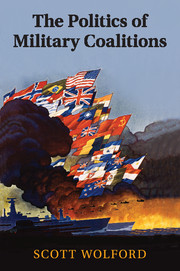4 - Cooperation, Signaling, and War
Published online by Cambridge University Press: 05 September 2015
Summary
He's playing a game … He thinks we're unwilling to act. If he thought there was real steel in the threat he wouldn't get away with it.
Prime Minister Tony Blair quoted in Richardson (2000, p. 146)Even with its considerable military might and unique power projection capabilities, the United States almost always finds itself securing the assistance of coalition partners in international crises. However, this added military leverage often comes with disagreements over how to engage the target state – disagreements whose implications for successful coercion are unclear. As discussed in Chapter 2, the Berlin Crisis of 1961 saw the United States search for a signaling strategy that would reassure nervous allies that it “would not be rash,” even though “the Soviet Union had to be persuaded that it just might be” (Freedman 2000, p. 93) in defense of Western rights in the divided city. In other words, the United States would have liked one audience to believe that it was willing to risk a costly war, even as it reassured another audience that any possible war would not be too costly. Similar problems plagued NATO efforts with respect to Kosovo in 1998–1999, as member states engaged in a lengthy debate over whether to threaten Serbia with a full-scale ground invasion or a relatively low-cost air campaign (Clark 2001, chs. 6, 7). In each case, concerns about undermining military cooperation produced ostensibly weak threats – a slow, limited mobilization in the former and a limited air campaign in the latter – that would seem to undermine statements of resolve. However, while the crisis in Kosovo escalated to war after an apparently weak threat, the Berlin Crisis did not, suggesting that the link between coalitions and the escalation of crises to war may not be as straightforward as the bivariate relationships uncovered in Chapter 2 or as suggested by the extant literature (Christensen 2011, Lake 2010/2011).
- Type
- Chapter
- Information
- The Politics of Military Coalitions , pp. 97 - 151Publisher: Cambridge University PressPrint publication year: 2015



